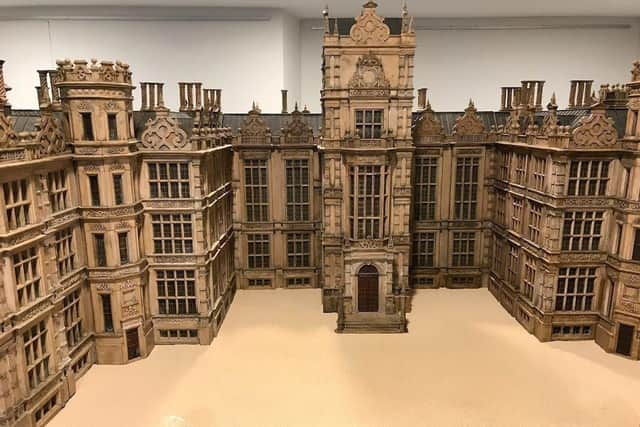Dalkeith Palace: An incredible 200-year-old model palace is going back on display - after 20 years in storage
and live on Freeview channel 276
An incredible 200-year-old model palace is going back on display - after 20 years in storage.
The elaborate prototype of Dalkeith Palace in Midlothian was built by Scott Monument designer George Meikle Kemp for the 5th Duke of Buccleuch.
Advertisement
Hide AdAdvertisement
Hide AdKemp spent two years building his intricate mock-up for architect William Burn, who led the Baronial Revival that is widely seen as Scottish architecture's golden age.


Burn had hoped to create a Jacobean-style home that was more elaborate than the original Palace, completed in 1711.
But his bold plans proved too ambitious, and the palace never materialised.
Kemp's model, completed in 1832, was displayed in the vestibule at Dalkeith Palace for 60 years before languishing, dismantled, in the Palace basement until 1993.
Advertisement
Hide AdAdvertisement
Hide AdAn eight-year restoration project, begun in 1993, led to comeback displays at Dalkeith and the Buccleuch mansion at Bowhill, near Selkirk, before a return to storage in 2003.
Lanarkshire cabinetmaker Patrick Baxter, who led the project, has spent the past two months preparing the model, which is up to 80cm high in places and two metres wide.
The intricately detailed wooden model will be on display at Biggar & Upper Clydesdale Museum in Lanarkshire from April 1 to September 3.
Museum curator Elaine Edwards said: "It demonstrates his painstaking eye for detail, his love of gothic flourishes and his ability to see a momentous challenge through to its conclusion.
Advertisement
Hide AdAdvertisement
Hide Ad"Biggar and Upper Clydesdale should be very proud of George Meikle Kemp so we're delighted that his magnificent handiwork can be enjoyed once more."
Kemp, who trained as a carpenter, went on to achieve architectural success when he won the competition to design Scott's memorial on Princes Street in 1838.
But he drowned in the Union Canal, aged 48, six months before the neo-gothic landmark's completion.
The cause of Kemp's drowning has never been discovered.
The architect's great-great-great niece, Morven Leese, who has written a book about Kemp, will be attending the exhibition.
Advertisement
Hide AdAdvertisement
Hide AdMorven, from London, said: "An Edinburgh Town Councillor described Kemp as 'perhaps one of the cleverest men in the country as well as one of the most modest'.
"Despite his talents, he never became a part of the established architectural profession and his untimely death meant the vast potential of this self-taught shepherd's son was never fully realised.
"How lovely it is to think he's being honoured now."
Comment Guidelines
National World encourages reader discussion on our stories. User feedback, insights and back-and-forth exchanges add a rich layer of context to reporting. Please review our Community Guidelines before commenting.
